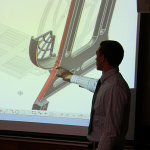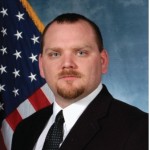 For many engineering students, writing is a chore at best. While there are some who excel at the craft, many panic at the very prospect of putting words on paper.
For many engineering students, writing is a chore at best. While there are some who excel at the craft, many panic at the very prospect of putting words on paper.
Yet, from their sophomore year until graduation, that’s exactly what mechanical engineering students must do to succeed in a series of three laboratory classes. To complicate matters, their reports are graded by graduate students, including many foreign nationals for whom English is a second language.






